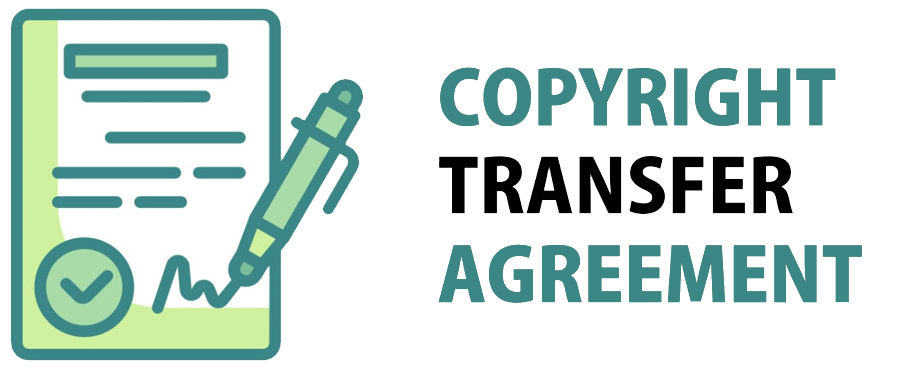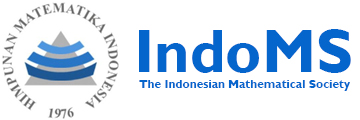Exploring The Mathematical Problem-Solving Abilities of Grade Xi Students Based On Polya's Model
 PDF Download: 87
PDF Download: 87
DOI:
https://doi.org/10.32665/james.v8i2.5133Keywords:
Matrices, Problem Solving Skills, Story ProblemsAbstract
Problem-solving skills are essential in facing current challenges and developments. This study aims to describe students' ability to solve mathematical problems in the form of matrix story problems. This study employs a qualitative descriptive method and involves 93 eleventh-grade high school students. The instrument used is a written test consisting of two problem-solving questions. Subject selection was based on the results of a problem-solving ability test. Data collection utilized the problem-solving ability test questions and interviews. Qualitative data analysis was conducted through data reduction, data presentation, and conclusion drawing. The analysis was conducted according to Polya's model. The results showed that 7 students (8%) had very good mathematical problem-solving skills, as they were able to complete all four stages of Polya's model. Another 19 students (20%) were categorized as having good skills, although they only completed three stages of Polya's model without performing the final verification stage. Meanwhile, 30 students (32%) were only able to complete two stages of Polya's model without fully understanding the problem and without conducting a recheck, thus categorized as having adequate problem-solving skills. Additionally, 37 students (40%) were only able to complete one stage of Polya's model without fully understanding the problem, without formulating a plan, executing the plan, and without conducting a recheck. Thus, they were categorized as having poor problem-solving skills. This indicates that each student's ability to understand the problem, develop a problem-solving plan, implement the problem-solving plan, and check the answers is still in the low category. Therefore, it can be concluded that students' mathematical problem-solving abilities are still low. It is hoped that teachers can train students in learning, conduct effective learning, and thus improve students' problem-solving abilities.
References
Azhari, B., & Irfan, A. (2019). Model-Eliciting Activities Dalam Menganalisis Kreativitas Pemecahan Masalah Matematika Pada Mahasiswa Pendidikan Matematika di PTKIN Aceh. Al Khawarizmi: Jurnal Pendidikan Dan Pembelajaran Matematika, 2(1), 1–18. https://doi.org/https://doi.org/10.22373/jppm.v2i1.4495
Giawa, L., Gee, E., & Harefa, D. (2022). Analisis Kemampuan Pemahaman Konsep Matematis Siswa Pada Materi Bentuk Pangkat Dan Akar Di Kelas Xi Sma Negeri 1 Ulususua Tahun pembelajaran 2021/2022. Afore: Jurnal Pendidikan Matematika, 1((1)), 64-77. https://doi.org/https://doi.org/10.57094/afore.v1i1.437
Hanan, K. (2019). Peningkatan kemampuan matematika mahasiswa dengan model pembelajaran Problem Based Learning sesuai teori konsep belajar Meaning. Jurnal Review Pembelajaran Matematika, 1(1), 2.
Haris, D. J. B. A., Herman, T., & Hasanah, A. (2025). Analysis of Students’ Comprehension in Solving Social Arithmetic Problems Based on Polya Steps. Eduvest - Journal of Universal Studies, 5(5), 5536–5546. https://doi.org/10.59188/eduvest.v5i5.51174
Lester, F. K. (2013). Thoughts about Research on Mathematical Problem-Solving Instruction. The Mathematics Enthusiast, 10(1), 245–278.
Novitasari, N., & Wilujeng, H. (2018). Analisis Kemampuan Pemecahan Masalah Matematika Siswa SMP Negeri 10 Tangerang. Prima: Jurnal Pendidikan Matematika, 2(2), 137. https://doi.org/http://dx.doi.org/10.31000/prima.v2i2.461
Permata, J. I., & Sandri, Y. (2020). Analisis Kemampuan Pemecahan Masalah Pada Siswa SMP Maniamas Ngabang. Riemann: Research of Mathematics and Mathematics Education, 2(1), 10–22.
Permendikbud. (2016). Peraturan Menteri Pendidikan dan Kebudayaan Republik Indonesia Nomor 23 Tahun 2016 tentang Standar Penilaian Pendidikan.
Schoenfeld, A. H. (1985). Mathematical problem solving. Academic Press.
Sembiring, V. M. (2023). Analisis Kemampuan Pemecahan Masalah Matematis Siswa SMA Dalam Menyelesaikan Soal Cerita Pada Materi SPLTV. Prosiding Sesiomadika, 4(1)., 247–258. https://journal.unsika.ac.id/sesiomadika/article/view/7590%0A
Siregar, N. R. (2017). Persepsi siswa pada pelajaran matematika : studi pendahuluan pada siswa yang menyenangi game. Prosiding Temu Ilmiah Nasional X Ikatan Psikologi Perkembangan Indonesia, 1., 224–232.
Sukmadinata, N. S. (2011). Metode Penelitian dan Pendidikan. Bandung: PT Remaja Rosdakarya.
Toh, T. L., Santos-Trigo, M., Chua, P. H., Abdullah, N. A., & Zhang, D. (2023). Problem posing and problem solving in mathematics education: International research and practice trends. Springer Nature Singpore. https://doi.org/https://doi.org/10.1007/978-981-99-7205-0.
Törner, G., Schoenfeld, A.H. & Reiss, K. M. (2007). Problem solving around the world: summing up the state of the art. ZDM Mathematics Education, 39, 353. https://doi.org/https://doi.org/10.1007/s11858-007-0053-0
Tuerah, M. S. R., & Tuerah, J. M. (2023). Kurikulum Merdeka dalam Perspektif Kajian Teori: Analisis Kebijakan. Jurnal Ilmiah Wahana Pendidikan, Oktober, 9(19), 982. https://doi.org/10.5281/zenodo.10047903
Ulva, Y., & Fitri, A. (2022). Analisis Kebutuhan Modul Matematika untuk Meningkatkan Kemampuan Pemecahan Masalah Siswa SMP N 4 Batang. Journal of Nusantara Education, 2 (1)(August), 11–21. https://doi.org/https://doi.org/10.57176/jn.v2i1.38
Downloads
Published
Issue
Section
Categories
License
Copyright (c) 2025 Journal of Mathematics Education and Science

This work is licensed under a Creative Commons Attribution-NonCommercial-ShareAlike 4.0 International License.
Authors who publish with this journal agree to the following terms:
- Authors retain copyright and grant the journal right of first publication with the work simultaneously licensed under a Creative Commons Attribution License that allows others to share the work with an acknowledgment of the work's authorship and initial publication in this journal.
- Authors are able to enter into separate, additional contractual arrangements for the non-exclusive distribution of the journal's published version of the work (e.g., post it to an institutional repository or publish it in a book), with an acknowledgment of its initial publication in this journal.
- Authors are permitted and encouraged to post their work online (e.g., in institutional repositories or on their website) before and during the submission process, as it can lead to productive exchanges, as well as earlier and greater citation of published work
 PDF Download: 87
PDF Download: 87














